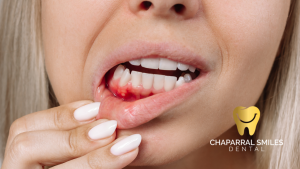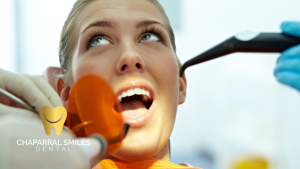Over time, maintaining your Invisalign aligners can significantly impact your treatment results. To ensure your aligners remain clear and effective, it’s important to establish a proper cleaning routine. This guide will provide you with practical tips to keep your aligners in top condition, along with a helpful resource on The Do’s and Don’ts of How to Keep Invisalign Clean. Follow these steps to achieve optimal oral hygiene and aligner maintenance.
Key Takeaways:
- Daily Cleaning: Rinse your Invisalign aligners with lukewarm water each time you remove them to prevent bacteria buildup and maintain freshness.
- Use Approved Products: Clean your aligners with a soft toothbrush and mild soap or use Invisalign cleaning crystals to ensure they remain clear and hygienic.
- Avoid Harsh Substances: Do not use alcohol-based mouthwashes or harsh chemicals, as these can damage the aligners and affect their fit.
Understanding Invisalign Aligners
Aligners are a modern orthodontic solution designed to straighten your teeth discreetly and comfortably. Invisalign aligners are custom-made, clear plastic trays that gradually shift your teeth into the desired position. They are removable, allowing you to maintain your oral hygiene and enjoy your favorite foods while undergoing treatment. Each aligner is typically worn for about two weeks before progressing to the next one, making this method not only effective but also convenient for your lifestyle.
What are Invisalign Aligners?
If you’re considering orthodontic treatment, you may have come across Invisalign aligners. These are transparent trays that are specifically molded to fit your teeth, providing a less noticeable alternative to traditional braces. Designed to be worn throughout the day and removed when eating or brushing, they help you achieve a straighter smile without the bulk of metal wires and brackets.
Importance of Proper Care
What you may not realize is that taking care of your Invisalign aligners is necessary for optimal results and oral health. Proper cleaning prevents the buildup of bacteria and plaque which can lead to bad breath or dental issues. Maintaining your aligners also ensures they remain clear and free from stains, allowing you to continue smiling confidently throughout your treatment.
For instance, neglecting to clean your aligners can result in a cloudy appearance, making them noticeable and detracting from their aesthetic advantage. Additionally, subpar hygiene can allow harmful bacteria to flourish, potentially leading to tooth decay and gum disease. Regularly soaking and brushing your aligners not only preserves their quality and clarity but also safeguards your dental health during your orthodontic journey.
How to Clean Your Aligners
Some people might think that rinsing their Invisalign aligners is enough, but proper cleaning is necessary for maintaining clarity and hygiene. Cleaning your aligners regularly prevents bacterial build-up and ensures they remain effective at straightening your teeth.
Step-by-Step Cleaning Process
One effective method to clean your aligners involves the following steps:
Cleaning Steps
| 1. Rinse your aligners under lukewarm water. |
| 2. Apply a gentle, clear antibacterial soap or toothpaste. |
| 3. Use a soft-bristled toothbrush to gently scrub your aligners. |
| 4. Rinse them thoroughly with cool or lukewarm water. |
| 5. Dry with a lint-free cloth or air dry completely before reinserting. |
(The right cleaning technique can prolong your aligners’ lifespan.)
Recommended Cleaning Solutions
One effective way to clean your aligners is by using a specialized cleaner designed for orthodontic appliances.
Understanding the importance of using an appropriate cleaning solution can help maintain your aligners’ clarity and avoid damage. Options like Invisalign cleaning crystals, mild soap, or denture cleaning tablets work well. Avoid harsh chemicals or colored products, as they can discolor or scratch your aligners. Always choose products specifically formulated for clear aligners to keep them safe and effective.
Tips for Daily Care
Despite the convenience of Invisalign, it’s imperative to maintain a routine that keeps your aligners in top shape. Here are a few tips to ensure proper daily care:
- Rinse your aligners each time you remove them.
- Brush them gently with a soft toothbrush and clear soap.
- Avoid using colored or scented soap, as it can be damaging.
- Soak your aligners daily using an Invisalign cleaning solution.
After following these tips, you can effectively maintain fresh and clean aligners. For more guidance, check out How to Clean Invisalign: Dos and Don’ts for Invisalign Wearers.
Practicing Good Oral Hygiene
Good oral hygiene is imperative while using Invisalign, as it minimizes the risk of cavities and gum disease. (Brushing and flossing after every meal helps keep your mouth clean.) Ensure that you brush at least twice a day and use fluoride toothpaste for optimal oral health.
Storing Your Aligners Safely
Aligners should always be stored in their designated case when not in use. (This helps prevent loss and damage.) Leaving them unprotected increases the risk of scratches and exposure to bacteria or other contaminants.
Your storage case should always be kept clean, ideally by rinsing it with warm water and mild soap regularly. (Making it a habit to clean the case can significantly improve your aligner hygiene.) Additionally, make sure to keep your aligners away from extreme heat or direct sunlight to maintain their shape and function.
Factors Affecting Aligner Care
Your aligner care routine can be influenced by several factors, including:
- Duration of wear
- Eating and drinking guidelines
- Cleaning methods
The choices you make regarding these aspects directly affect the hygiene and longevity of your aligners. For helpful tips on cleaning and maintenance, check out How to Clean Invisalign: Do’s, Don’ts, and Best Practices …
Duration of Wear
If you wear your aligners for the recommended 20-22 hours a day, it ensures optimal treatment progress (while also minimizing plaque buildup). The more regularly you wear them, the better they will fit, and you’d need fewer adjustments.
Eating and Drinking Guidelines
On your journey with Invisalign, it’s vital to take your aligners out during meals and to consume only water while wearing them (as eating with aligners can lead to staining). This helps preserve the clarity and integrity of your aligners.
Affecting the life of your aligners involves making informed choices while eating and drinking. Sticking to clear liquids can keep your aligners in pristine condition (as colored beverages may lead to discoloration). Always ensure that you clean your aligners before placing them back in your mouth after meals for enhanced hygiene.
Troubleshooting Common Issues
Now that you’ve learned how to clean and care for your Invisalign aligners, it’s time to tackle common problems that may arise. You may encounter issues like odor, plaque buildup, or discoloration if your aligners aren’t properly maintained. Addressing these concerns promptly will help ensure your treatment progresses smoothly and effectively.
Odor and Plaque Buildup
Little issues, such as odor and plaque buildup, can occur if your aligners are not cleaned regularly. To prevent this, make it a habit to clean your aligners with gentle soap and water at least once a day, and avoid drinking beverages other than water while wearing them (this will also keep your mouth healthier).
Discoloration Prevention
If you want to maintain the clarity of your Invisalign aligners, it’s vital to take steps to prevent discoloration. Foods and drinks that are high in color, such as coffee or red wine, can stain your aligners if they come in contact with them. Always remove your aligners when consuming these items, and keep them in their case to avoid exposure to contaminants.
A well-disciplined cleaning routine is vital for enhancing the lifespan and effectiveness of your aligners. In addition to removing them during meals, ensure you rinse them under cool water each time you remove them, and utilize the recommended cleaning solution occasionally for a deep clean. Following these practices will help keep your aligners transparent and looking fresh throughout your treatment.
FAQs About Invisalign Care
Your questions about maintaining your Invisalign aligners are common, and addressing them can enhance your experience. Many users worry about how to properly clean and store their aligners to prevent damage and maintain oral hygiene. (Deciding between cleaning methods can significantly impact your aligners’ lifespan.)
Common Concerns
Any concerns about odors or staining from your aligners can easily be mitigated with proper care. You might also wonder if it’s safe to eat and drink while wearing them, which is best to avoid. (Choosing to remove your aligners during meals is advisable for optimal maintenance.)
Additional Tips
Any additional care tips can help preserve the integrity of your aligners and improve your Invisalign experience. Consider using a dedicated cleaning solution designed for aligners, as it can eliminate buildup effectively.
- Always rinse your aligners after eating.
- Brush your teeth before re-inserting them.
- Store them in a protective case when not in use.
The more consistently you apply these tips, the better your results will be.
FAQs about cleaning your aligners can offer more insight into effective care strategies. You might want to explore different methods to find what works best for you.
- Avoid using hot water, which can warp the aligners.
- Use a soft-bristled toothbrush for cleaning.
- Consider soaking them daily for deep cleaning.
It’s necessary to maintain these practices for a smoother treatment process.
To wrap up
As a reminder, maintaining the cleanliness and care of your Invisalign aligners is crucial for optimal treatment results. You should thoroughly rinse your aligners and clean them with the appropriate solution daily, avoiding hot water or harsh chemicals. Regularly brushing your aligners with a soft-bristled toothbrush keeps them fresh and free from plaque. Make it a habit to store them in their case when not in use to prevent damage or contamination. By following these simple steps, you ensure that your aligners remain effective throughout your treatment journey.





